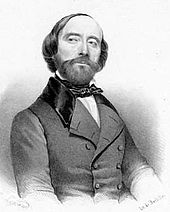
Back Roberto Devereux Catalan Robert Devereux (opera) Czech Roberto Devereux German Roberto Devereux Spanish Roberto Devereux Estonian Roberto Devereux French Roberto Devereux Galician Devereux Róbert Hungarian Ռոբերտո Դևերո Armenian Roberto Devereux Italian
| Roberto Devereux | |
|---|---|
| tragedia lirica by Gaetano Donizetti | |
 | |
| Librettist | Salvadore Cammarano |
| Language | Italian |
| Based on | Elisabeth d'Angleterre by François Ancelot |
| Premiere | 28 October 1837 Teatro San Carlo, Naples |

Roberto Devereux (in full Roberto Devereux, ossia Il conte di Essex, Italian: [roˈbɛrto deveˈrø osˈsiːa il ˈkonte di ˈɛsseks]; "Robert Devereux, or the Earl of Essex") is a tragedia lirica, or tragic opera, by Gaetano Donizetti. Salvadore Cammarano wrote the Italian libretto after François Ancelot's tragedy Elisabeth d'Angleterre (1829), and based as well on the Historie secrète des amours d'Elisabeth et du comte d'Essex (1787) by Jacques Lescène des Maisons. Devereux was the subject of at least two other French plays, both titled Le Comte d'Essex: one by Thomas Corneille and one by Gauthier de Costes, seigneur de la Calprenède.
The opera is loosely based on the life of Robert Devereux, 2nd Earl of Essex, an influential member of the court of Queen Elizabeth I of England. The plot of Roberto Devereux was hardly original, mainly derived from Felice Romani's libretto Il Conte d'Essex of 1833, originally set by Saverio Mercadante. Romani's widow charged Cammarano with plagiarism; the practice of stealing plots was very common between rival Italian opera houses.
It is one of a number of operas by Donizetti which deal with the Tudor period of English history and which include Anna Bolena (about Anne Boleyn), Maria Stuarda (about Mary, Queen of Scots) and Il castello di Kenilworth. The lead female characters – Anne Boleyn, Mary Stuart and Elizabeth herself – have been referred to as the "Three Donizetti Queens." They became popular in the 1970s, when the American soprano Beverly Sills promoted them as a series at New York City Opera.
It has been said that, "although the plot plays fast and loose with history, the opera carries its own brand of dramatic conviction".[1]
- ^ Ashbrook and Hibberd 2001, p. 239
© MMXXIII Rich X Search. We shall prevail. All rights reserved. Rich X Search